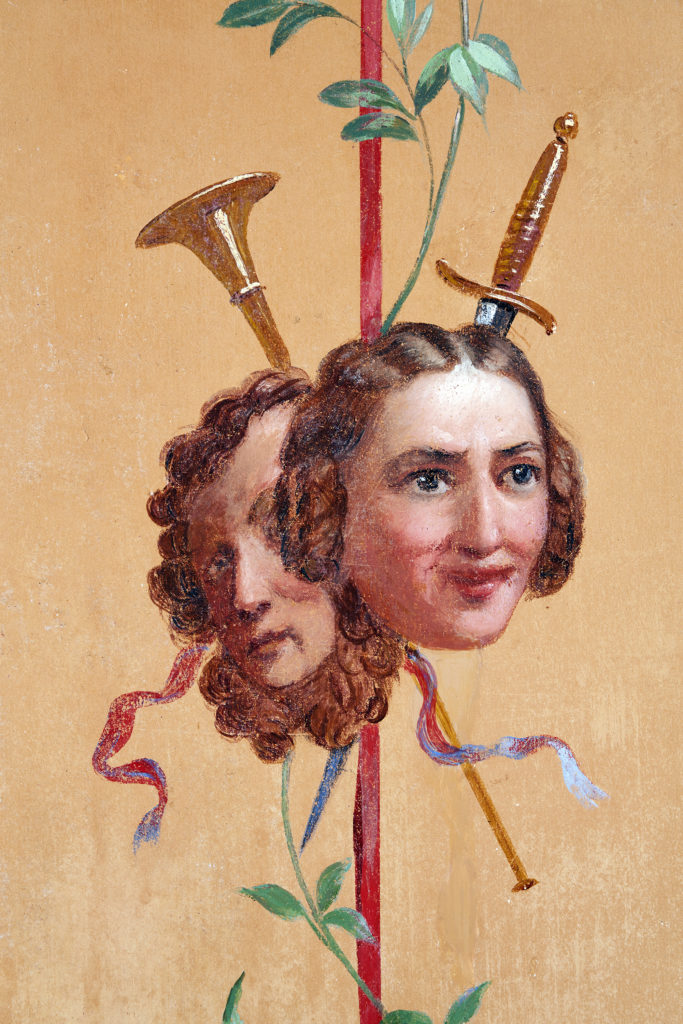Edward Greene de Freville and Julia Flower, granddaughter of William Vane, taken from a fresco in the Pompeiian Room
Painting
Hidden within the decorated walls of the Pompeiian Room at Hinxton Hall is this painting of what we believe to be the likeness of Edward Humphrys Green (later de Freville) and his bride to be society lady, Julia Flower, niece to the Duke of Cleveland.
Giorgio Bowler’s dissertation on the Pompeiian Room carefully researches and debates the limited and sometimes conflicting evidence as to the exact provenance of this unusual feature of the Hall. He arrives at the conclusion that it was completed in 1845 and it is likely that Edward had the room painted to celebrate his imminent wedding the following year.
1846 entry in the weekly newspaper 1762-1934, the Cambridge Chronicle and University Journal:
“On Saturday last, the 29th [last month] were married Edward H. Greene, Esq of Hinxton in this country and Julia eldest daughter of Francis Forester, Esq., of St. James’s Place, widow of the late captain Flower and niece of the Duke of Cleveland. The Absence of most of their noble relatives at this late period of the season caused a small attendance only of those which had received invitations. There were, however, present at the ceremony, the Duchess of Cleveland, Countess Poulett, Hon. Mrs. Portman… [and a number of Ladies, Sirs, Lords and Hons listed in the wedding guests]. The company assembled afterwards at an elegant dejeurner which was given upon the occasion by the Duchess Dowager of Cleveland.”
– Hinxton Chronicles, by Mary Symonds. Courtesy of Cambridgeshire Collection, Cambridge Central Library.
The painting of the parlor suggests a rise in the de Freville’s social standing through this new match. In subsequent years this was further reflected in the entries in Edward’s diaries suggesting the King of Holland, a close friend of Edward’s, regularly stayed at the Hall.
